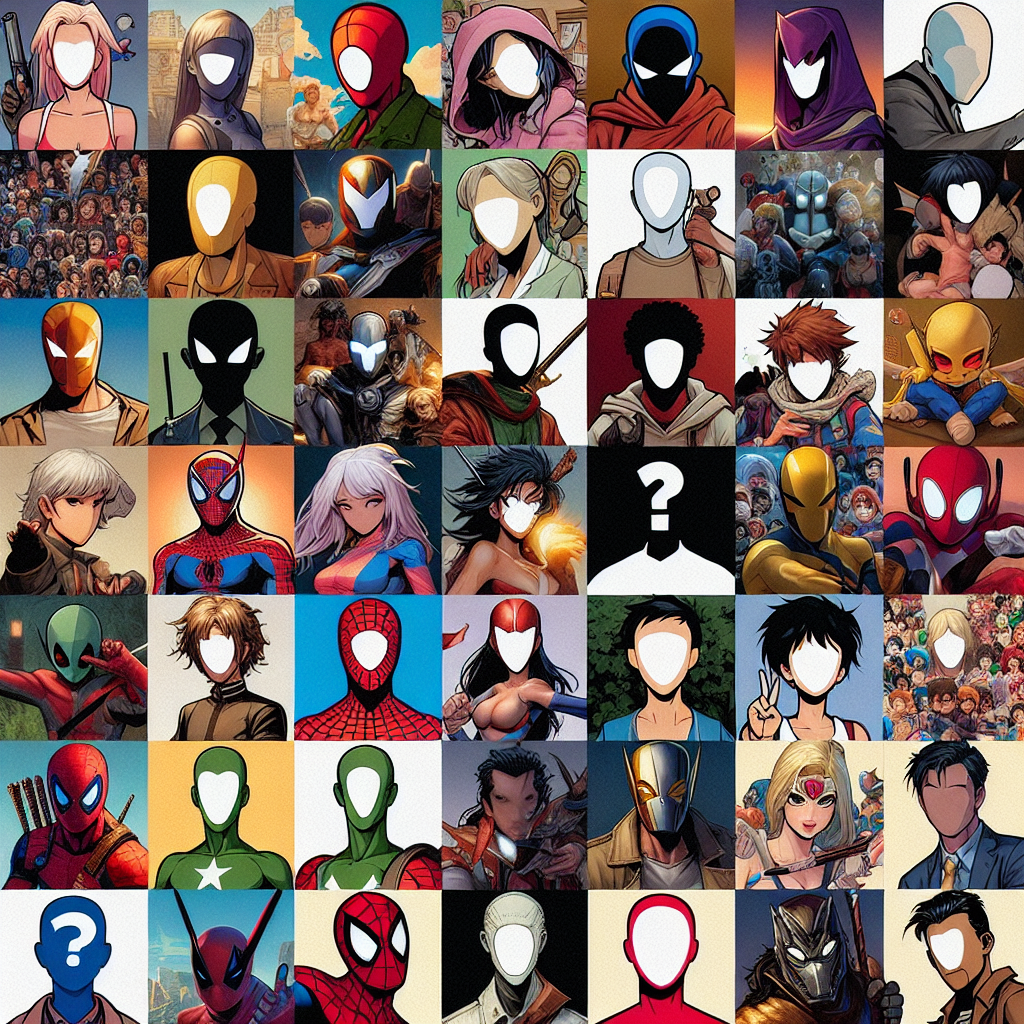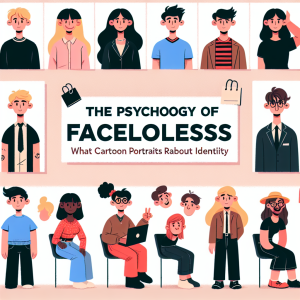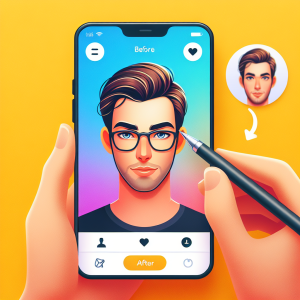Imagine flipping through the pages of a comic book or watching an episode of your favorite animated series when suddenly, you come across a character whose face is conspicuously absent. Instead of a set of features that define their identity, there’s only a smooth, blank canvas where one would expect eyes, nose, and mouth. Doesn’t it send shivers down your spine? This intriguing artistic choice raises questions about identity, emotion, and the essence of personhood itself. In the realm of pop culture, faceless portraits have carved out a unique niche, captivating audiences, and provoking thought about who we are beneath the surface.
The Emergence of the Faceless Trend
Faceless characters have been a fascinating phenomenon across various mediums, from comics to animation. This artistic style challenges the conventional paradigm of character design. By stripping characters of their facial features, creators compel audiences to engage with them on a more emotional and conceptual level. It raises the question: Are we more than our appearances? This trend can be traced back to several key influences.
From Literature to Visual Arts
Though faceless portraits may seem like a modern trend, the roots run deep into art history and literature. Many authors and artists throughout history have toyed with the idea of anonymity and the absence of traditional identity markers. The notion of the ‘unseen’ has been a compelling subject for exploration.
One significant precursor to faceless visuals in pop culture is found in literature. Writers like Franz Kafka and F. Scott Fitzgerald often delved into the notion of the invisible man, characters who felt lost in society or stripped of their essence. These themes transitioned seamlessly into visual art and later, comics and animation, where the lack of a face could symbolize deeper emotional experiences or existential crises.
Faceless Characters in Comics
Comics have a long-standing tradition of using faceless characters to convey themes of anonymity, anonymity, or rebellion against societal norms. Consider the enigmatic character of The Question from DC Comics. Originally created in the 1960s, this character’s lack of facial features reflects a desire to uncover hidden truths in a corrupt world. The smooth surface of his mask serves a dual purpose: it hides his identity and symbolizes the facelessness of societal issues.
Another prominent example is Rorschach from Watchmen. His shifting inkblot mask is not just a formidable disguise; it represents his complex psyche, often seeing the world in black and white. By presenting a character with a face made of shifting shapes, writer Alan Moore invites readers to ponder morality and justice in a morally ambiguous world.
The Role of Animation in Promoting Faceless Characters
Animation has explored the idea of faceless characters with delightful whimsy and poignant resonance. One of the most iconic faceless figures is Eggman from the Sonic the Hedgehog franchise. His bulbous body and absence of traditional facial features allow him to be both amusing and slightly unsettling, playing into the cartoonish yet sinister nature of his role as an antagonist.
Another notable instance can be found in Hayao Miyazaki’s masterpiece, Spirited Away. The character known as No-Face serves as a brilliant rendering of the faceless motif. His mask signifies the emptiness and yearning for connection, symbolizing the struggle many feel in a fast-paced world, making him a beloved yet deeply profound character in animation history.
Mathieu in Modern Media
Faceless characters have also gained a foothold in webcomics, indie games, and social media. Creators leverage this concept to develop relatable characters that resonate with themes of isolation, anxiety, and existential dread. A prominent example is Sans from the indie game Undertale. With his cartoonish skull for a face, Sans embodies a blend of humor and depth. The subtlety of his character speaks volumes, enrapturing players with his witty dialogue while leaning into the heaviness of real emotions.
Understanding the Appeal
So, why are faceless characters so captivating? There are several reasons for their enduring allure in popular culture.
1. Symbolism of Anonymity
The faceless nature of these characters often represents the collective human experience. They stand in as symbols for anonymity, illustrating how we can feel lost or undefined within societal structures. By stripping away individuality, these characters provide a mirror reflecting our shared struggles.
2. Universality of Emotion
Faceless portraits allow viewers to project their emotions onto these characters. Without facial features dictating a specific feeling, there’s a canvas for interpretation. The audience can imbue the character with their own insights, making a more personal connection.
3. Ambiguity and Mystery
There’s an inherent intrigue in mystery. Faceless characters often carry an air of enigma; their stories and motivations remain open for discovery. This ambiguity stirs curiosity, inviting audiences to dig deeper into the narrative and the character’s psyche.
Exploring the Contrast: Faceless vs. Featured Characters
In the grand tapestry of storytelling, faceless characters stand as a counterpoint to their well-defined counterparts. While vividly rendered faces provide immediate visual cues about a character’s emotions and intentions, faceless portraits challenge conventional storytelling techniques.
Consider the Disney Princesses. Each of these iconic characters flaunts distinct features that communicate their personalities and emotions. The contrast becomes stark when juxtaposed with the likes of Rorschach or No-Face, who offer a more complex narrative based on the swimmer rather than the swimmer’s immediate visual appearance.
Faceless Portraits in Internet Culture
In recent years, the rise of memes has also embraced the faceless motif. Characters devoid of faces are frequently employed in meme culture to encapsulate the heightened emotion of a moment without being hindered by specific traits. These faceless figures transcend personal identity, becoming archetypes that speak to universal experiences — anxiety, happiness, confusion, and more.
Conclusion: The Meaning Behind Faceless Portraits
Faceless portraits in pop culture engage audiences beyond the superficial. They strip down identity to explore themes of isolation, empathy, and ambiguity, provoking reflections on the essence of humanity. In a world that often values surface-level appearances, faceless characters serve as reminders that there’s far more beneath the skin.
As we look forward to future media, one thing continues to shine through: the power of anonymity in storytelling. The faceless portraits in comics, animation, and beyond provide an open portal to reflect on our own hidden truths and shared human experiences. So the next time you encounter a faceless character, remember, there’s a lot more happening just underneath that flat surface.
FAQ
What are faceless portraits in pop culture?
Faceless portraits are characters or representations in media that lack defined facial features. They often symbolize themes of anonymity, emotional depth, or existential exploration, inviting audiences to engage more personally with the narrative.
Why do creators use faceless characters?
Creators use faceless characters to symbolize anonymity, create emotional resonance, and invoke curiosity. This artistic choice allows for a universal interpretation of feelings and experiences, connecting audiences to the character on a deeper level.
Can you provide examples of faceless characters in comics?
Sure! Notable examples include The Question from DC Comics and Rorschach from Watchmen. Both characters utilize their facelessness to explore themes of identity, morality, and the search for truth in complex worlds.
How do faceless characters differ from traditional characters?
Faceless characters often lack detailed emotional expressions, forcing audiences to interpret their feelings and intentions based solely on context and design. Traditional characters typically feature expressive faces, guiding the audience’s understanding of their emotions and motivations.
What significance do faceless characters hold in animation?
In animation, faceless characters, such as No-Face from Spirited Away, serve to highlight themes of yearning and identity. Their design often evokes feelings of mystery and invites audiences to reflect on broader societal issues or personal struggles.
Are faceless portraits popular in modern media?
Yes! Faceless portraits are increasingly popular in various media forms, including webcomics, indie games, and social media memes. They resonate strongly, particularly among younger audiences, as they explore themes of anxiety, identity, and connection in a relatable manner.








+ There are no comments
Add yours